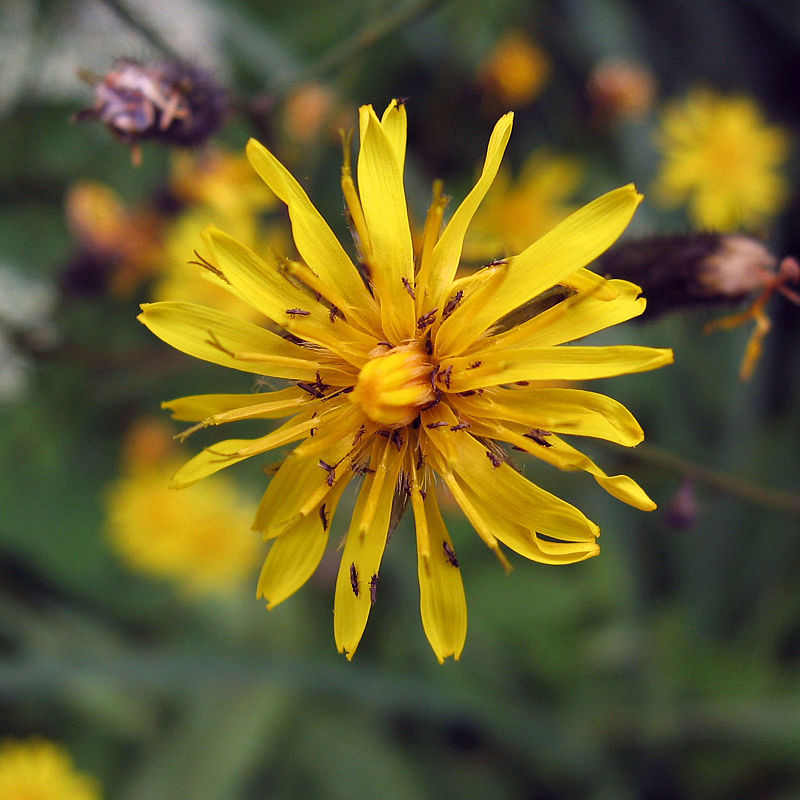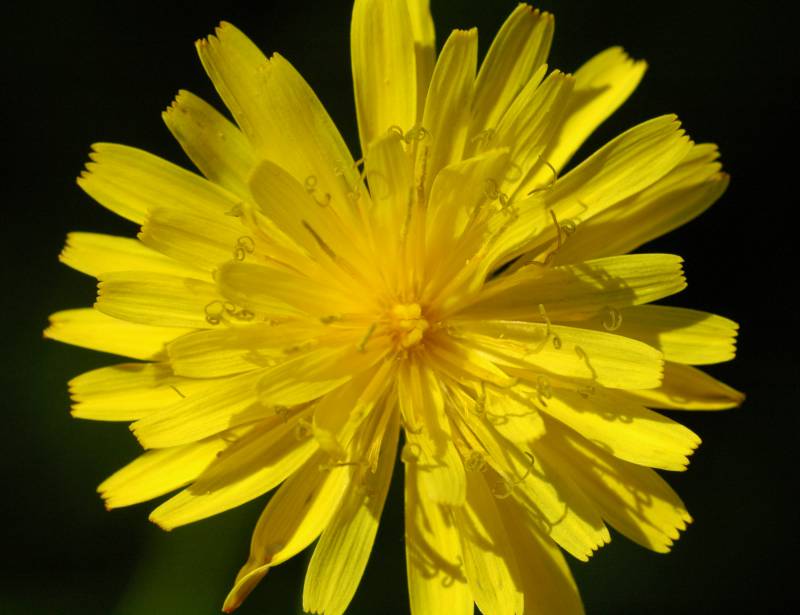Crepis tectorum
Crepis capillaris
annual hawksbeard, narrow leaf hawksbeard, rooftop hawksbeard
smooth hawksbeard
Basal leaves petiolate, the blade lanceolate or oblanceolate, finely toothed to pinnately parted, up to 15 cm. long and 4 cm. wide; reduced cauline leaves sessile and auriculate, linear, often involute.
Basal leaves petiolate, the blade lanceolate to oblanceolate, with fine teeth to pinnatifid, 3-30 cm. long and 5-45 mm. wide;
cauline leaves reduced upward, becoming sessile, narrowly lanceolate, clasping and auriculate.
Heads several to numerous, 30-70 flowered;
involucre 6-9 mm. high, its inner bracts 12-15, with fine hairs and sometimes with stalked glands as well, the outer bracts about one-third as long;
corollas all ligulate, yellow.
Heads several or numerous, 20-60 flowered;
involucre 5-8 mm. high, its inner bracts 8-16, white-woolly and often glandular-bristly with black hairs, becoming spongy-thickened on the back; outer bracts linear, less than half as long as the inner.
Achenes 2.5-4.5 mm. long, dark reddish-brown, spindle-shaped, with 10 ribs.
Achenes tawny, 1.5-2.5 mm. long, tapered at both ends.
Crepis tectorum
Crepis capillaris
- Local floras:
BC,
CA,
OR,
WA
- Local Web sites:
CalFlora,
CalPhotos,
Flora NW,
PNW Herbaria
WildflowerSearch
iNaturalist (observations)
USDA Plants Database
- LBJ Wildflower Center
- SEINet
- Plants of the World Online
- Encyclopedia of Life
- Wikipedia
- Google Image Search
- Local floras:
BC,
CA,
OR,
WA
- Local Web sites:
CalFlora,
CalPhotos,
Flora NW,
PNW Herbaria,
Turner Photog.
WildflowerSearch
iNaturalist (observations)
USDA Plants Database
- LBJ Wildflower Center
- SEINet
- Plants of the World Online
- Encyclopedia of Life
- Wikipedia
- Google Image Search



